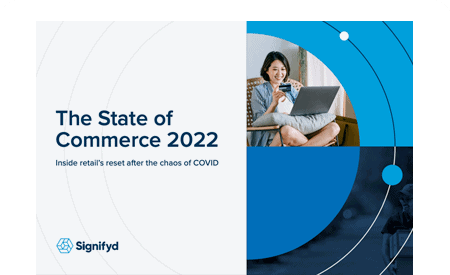Like Visa, Mastercard has its own programs to help reduce the number of chargebacks and mitigate fraud. Mastercard sees chargebacks as a negative cardholder experience that could reflect poorly on Mastercard itself, and they consider these programs a way to help protect their brand’s reputation.
Below we’ll address frequently asked questions regarding Mastercard’s chargeback and fraud programs, the thresholds for those programs, and the consequences a merchant faces if placed in one of Mastercard’s programs.
Q: What is the ECP?
A: ECP stands for Excessive Chargeback Program. Mastercard has designed this program to identify merchants with a high rate of chargebacks and by levying financial penalties they provide merchants with incentive to correct the situation.
Q: How does Mastercard determine a merchant has an “excessive” number of chargebacks?
A: Mastercard determines if a merchant has an excessive number of chargebacks based on two factors:
- Chargeback Count = Total number of Mastercard payments that have been disputed
- Chargeback Rate = The merchant’s chargeback-to-transaction ratio (number of chargebacks divided by total transactions processed)
The Mastercard ECP has two levels. Excessive Chargeback Merchant (ECM) and High Excessive Chargeback Merchant (HECM). Below are the thresholds for each level of the ECP.
ECM
- Chargeback Count = 100 – 299
- Chargeback Rate = 1.5% – 2.99%
HECM
- Chargeback Count = 300+
- Chargeback Rate = 3%
Q: What are the consequences for merchants placed in the ECP?
A: Consequences include fines but can also include something Mastercard calls Issuer Recovery Assessments. The exact amounts depend on what level of the program a merchant is in, the number of months the merchant has been in the program, and the number of chargebacks a merchant has had in each month.
ECM
| Months Above Threshold | Fine Amount | Issuer Recovery Assessment (The amount is $5 per chargeback above 300 and is added on top of the fine amount.) |
| 1 | $0 | |
| 2 | $1,000 | |
| 3 | $2,000 | |
| 4-6 | $5,000 | |
| 7-11 | $25,000 | |
| 12-18 | $50,000 | |
| 19+ | $100,000 |
HECM
| Months Above Threshold | Fine Amount | Issuer Recovery Assessment (The amount is $5 per chargeback above 300 and is added on top of the fine amount.) |
| 1 | $0 | |
| 2 | $1,000 | |
| 3 | $2,000 | |
| 4-6 | $10,000 | |
| 7-11 | $50,000 | |
| 12-18 | $100,000 | |
| 19+ | $200,000 |
Q: How does a merchant get out of the Mastercard ECP?
A: Mastercard may ask that a merchant’s acquirer or payment processor submit a remediation plan from the merchant detailing steps taken to reduce their chargebacks once a merchant is included in the program. But ultimately, to exit the ECP, a merchant must remain under the ECM thresholds for three consecutive months. If a merchant at the HECM level falls below the HECM thresholds, but is still above ECM thresholds, they move from HECM to ECM until they can remain under the ECM thresholds for three consecutive months.
Q: What is the Mastercard EFM Program?
A: EFM is the Excessive Fraud Merchant compliance program and is designed specifically for merchants who are receiving an excessive number of chargebacks that are related to fraud.
Q: How does Mastercard determine a chargeback is related to fraud?
A: Mastercard looks at the reason code for the chargeback. Reason codes 4837 and 4863 indicate that the charges are or are potentially fraud related.
Q: How does Mastercard determine that a merchant’s fraud-related chargebacks have reached an excessive amount?
A: A merchant that goes above all four of the thresholds below are placed in the EFM program.
- Has at least 1,000 ecommerce Mastercard transactions
- Total fraud volume is above $50,000
- Fraud-related chargeback rate of more than 0.50%
- For merchants in regulated countries, 10% or less of the merchant’s Mastercard transactions leveraged 3DS. For merchants in non-regulated countries, 50% or less of their transactions leveraged 3DS.
Q: What consequences does a merchant in the EFM program face?
A: Like the ECP, it will depend on the number of months the merchant is above the threshold, but there are no Issuer Recovery Assessments with the EFM Program.
| Months Above Threshold | Fine Amount |
| 1 | $0 |
| 2 | $500 |
| 3 | $1,000 |
| 4-6 | $5,000 |
| 7-11 | $25,000 |
| 12-18 | $50,000 |
| 19+ | $100,000 |
Q: How does a merchant exit the EFM Program?
A: Same as the ECP, a merchant exits the program when they’ve gone three consecutive months below the EFM program thresholds.
Photo by Getty Images
Navigating an excessive fraud or chargeback program? We can help.
ECM:
| Months Above Threshold | Fine Amount | Issuer Recovery Assessment (Amount is $5 per chargeback above 300 and is added on top of the fine amount) |
| 1 | $0 | |
| 2 | $1,000 | |
| 3 | $2,000 | |
| 4-6 | $5,000 | |
| 7-11 | $25,000 | |
| 12-18 | $50,000 | |
| 19+ | $100,000 |









